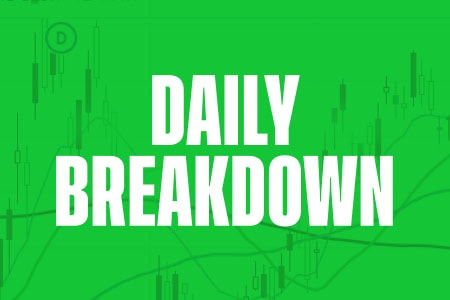The Daily Breakdown teaches you how to prepare for an S&P 500 record high.
Friday’s TLDR
- Investors bought the dip (again).
- The S&P 500 is flirting with record highs.
- China-linked stocks rebound.
What’s happening?
And just like that, the dip has been bought again.
The S&P 500 ended a two-day streak of declines, rising 0.9%. Tech stocks led the pack higher with a 2% gain, while defensive stocks like consumer staples and utilities held up the rear.
Economic data came in strong, with buying permits and housing starts growing at the fastest year-over-year pace since early 2022. Jobless claims – an early indicator of job market stress – fell to the lowest point since September 2022.
All in all, it was a confidence-boosting day for the stock market. Gains are gains, but ideally, you want more offensive, economically linked stocks to lead the market higher. And of course, you want strong economic data to be rewarded.
For a trading session, it felt normal. But we have to remember that we’re not back to normal just yet. The 10-year yield is creeping higher, and inflation concerns could resurface.
Stay nimble out there, and remember that selloffs are normal, even in healthy markets and strong economies.
The setup
The S&P 500 is this close to an all-time high, something we haven’t seen in over two years.
Yesterday, the index closed just 30 basis points from a record close. If you consider the fact that the S&P’s average one-day move is around 0.8%, we could be just one trading session from the milestone.
It’s a big milestone, too. A record high would mean that we’re officially in a bull market, or a period of consistently rising prices. It’s the ultimate technical level – an admission that the bear market of 2022 is behind us.
What’s in play once we reach the record, though? Well, if history is any guide, we could see stocks digest the move a little. After the first record high in each of the last 10 bull markets, the S&P 500 posted an average return of 0.5% over the next five days.
Records don’t mean that stocks are overheated and a crash is imminent, though. Since 1950, bull markets have run for an average of four and a half years more after their first record, notching many more along the way.
So as the S&P 500 flirts with a record, make sure you’re ready for what happens next. Pick your instrument, too. The S&P 500 itself isn’t tradeable, but the SPDR S&P 500 fund is the most popular ETF tracking the index.
Want to receive these insights straight to your inbox?
What Wall Street is watching
AMAT: Applied Materials, Lam Research, and other stocks that generate revenue in China rebounded after selling off on Wednesday. Investors fled these stocks after data showed China’s economy grew just 5.2% last year.
AAPL: Apple shares jumped the most in eight months after Bank of America analyst Wamsi Mohan upgraded the stock, citing optimism around Apple’s progress in augmented and virtual reality. Mohan thinks the stock could reach $225 over the next 12 months, 19% from where it is currently.
CVS: CVS shares fell the most in five months amid a wider drop in healthcare stocks yesterday. Humana’s fourth-quarter earnings missed estimates and the insurer warned of higher costs ahead, sending shockwaves through the sector.
Disclaimer:
Please note that due to market volatility, some of the prices may have already been reached and scenarios played out.



